
Kodiak 900 flight-test aircraft, first flown on Feb. 28, 2020, shown parked at Sandpoint Airport.
SANDPOINT, Idaho - The French manufacturer of sleek TBM turboprops also builds bush planes in the northern Idaho panhandle—seemingly disparate businesses that increasingly are being integrated as part of its industrial expansion.
France’s Daher Aerospace announced this year that it is increasing production of the Kodiak line of single-engine turboprops it acquired in October 2019 when it bought Quest Aircraft Co. from Setouchi Holdings of Japan. The production ramp-up follows a $2.7 million investment by Daher in a new paint facility and a second final assembly line supporting the Kodiak 900, unveiled in July 2022.
"We have good momentum on the market for the Kodiak," says Daher Aircraft CEO Nicolas Chabbert. "As a highly capable utility aircraft that is modern and safe, the Kodiak fulfills the requirements of a customer base that ranges from private and business users to multi-mission operators.”
Daher builds Kodiaks in Sandpoint, Idaho, a ski resort town on the western shore of Lake Pend Oreille, the state’s largest body of water. Surrounded by snow-capped mountain ranges, the region is an outdoor sports mecca and a fitting base for the Kodiak brand of rugged, short-takeoff-and-landing (STOL)-capable, multi-role turboprops. Quest Aircraft founders David Voetmann, a pilot with Mission Aviation Fellowship, and Tom Hamilton, designer of the Glasair kit plane, developed the legacy Kodiak 100 to serve humanitarian organizations.
While a typical aircraft final assembly line focuses on mating pre-built airframe components, the Sandpoint facility performs 80% of aircraft build-up and assembly, producing onsite a majority of Kodiak wing and fuselage skin surfaces. Sheet metal the manufacturer acquires is pre-drilled in a match-hole drilling process, then passed to bending and forming operations before being moved to final assembly of the fuselage, wing and tail in fixtures and jigs. Pilots are reminded on front-seat yokes that Kodiaks are “built by hand in Sandpoint, Idaho.”
Expansion In North America

Family-owned Daher acquired the Kodiak product line in the early stages of a five-year strategic plan (from 2018-22) to expand its portfolio of single-engine, turboprop-powered general aviation and business aircraft, bringing the Kodiak together with its high-speed TBMs. The plan also called for Daher to balance its industry and services portfolio and become a Tier 1 supplier to a major aircraft manufacturer.
Didier Kayat, the industrial group’s first non-family chief executive, had taken over as CEO from Patrick Daher in 2016. This June, Kayat was named chairman upon Daher’s retirement.
Daher already operated a TBM regional delivery and support center at Pompano Beach Airpark in Florida. In July 2022, it purchased the Triumph Group Aerostructures business in Stuart, Florida, a supplier of aerostructures to Boeing and Gulfstream. (Daher subsequently brought a lawsuit against Triumph in December 2023, alleging fraud and breach of contract.) The French company has said its long-term vision is to expand the aerostructures business in Stuart, which it is also contemplating as a site for a new Kodiak/TBM final assembly operation.
In January 2023, Daher cut the ribbon on a new North American headquarters in Fort Lauderdale, Florida.
These facilities complement a Daher site in Mobile, Alabama, that provides logistics services supporting the Airbus A320 and A220 final assembly lines in the U.S. A Daher facility in Nogales, Mexico, across the border from Arizona, specializes in finished composite parts and subassemblies for aircraft engines and systems, counting Pratt & Whitney and Safran among its customers.
Daher reported revenue of €1.65 billion ($1.78 billion) in 2023. It plans to be a €2 billion industrial group by 2027.
Production Ramp-Up
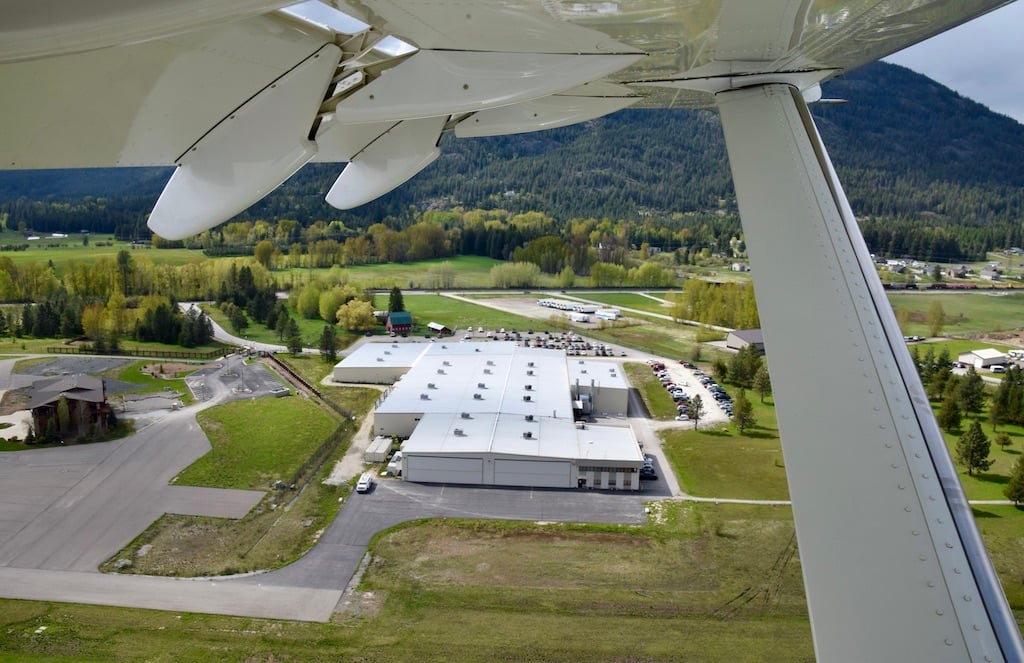
In April, Daher announced that it will increase production capacity at Sandpoint to 25 aircraft this year, from 18 in 2023. Supporting the ramp-up is the addition of a second, parallel production line from stages three to six in the assembly process, with separate integration steps for the Kodiak 100 and 900 involving wing and horizontal stabilizer mating, flight controls integration and engine and avionics installation.
The manufacturer says it employs about 450 people at its Sandpoint Airport complex, which includes a Part 145 repair station.
Daher inaugurated the new 9,000-ft.2 paint facility last October. The Sandpoint site mirrors best practices the manufacturer uses for its TBM series turboprops in Tarbes, France, where major components including the fuselage, wings, control surfaces, cowlings and doors are painted individually, then flowed into the final assembly line.
In the past, Kodiaks were flown to paint shops in other states, which extended the production cycle and required that control surfaces be removed and then reinstalled. Daher estimates that onsite painting saves up to 20 days in the overall production process.
The FAA awarded type certification of the Kodiak 100 in 2007 and issued a production certificate to Quest Aircraft in 2009. Daher delivered the first Kodiak 100 Series III aircraft, the type’s current iteration, in March 2021. Its 2024 factory-new, average equipped, list price is $3.25 million, according to the Aircraft Bluebook.
Third-generation Series III models come with a 750-shp (700-shp max continuous power) Pratt & Whitney Canada PT6A-34 turboprop engine, Hartzell five-blade composite propeller, Garmin G1000 NXi avionics suite (introduced by Quest in the Series II iteration), optional Garmin GWX 75 weather radar and TKS ice-protection system.
Should an owner need to change out its wheels for amphibious operations, the Kodiak 100 comes provisioned for floats without structural changes. The aircraft seats up to eight passengers and two crew, cruises up to 174 KTAS at 12,000 ft., and operates to 1,132 nm (1,303 mi.) maximum range. Max takeoff weight is 7,255 lb., and useful load (pilots, passengers, baggage, usable fuel and drainable oil) of the base aircraft is 3,530 lb.
Kodiak 900 Debut
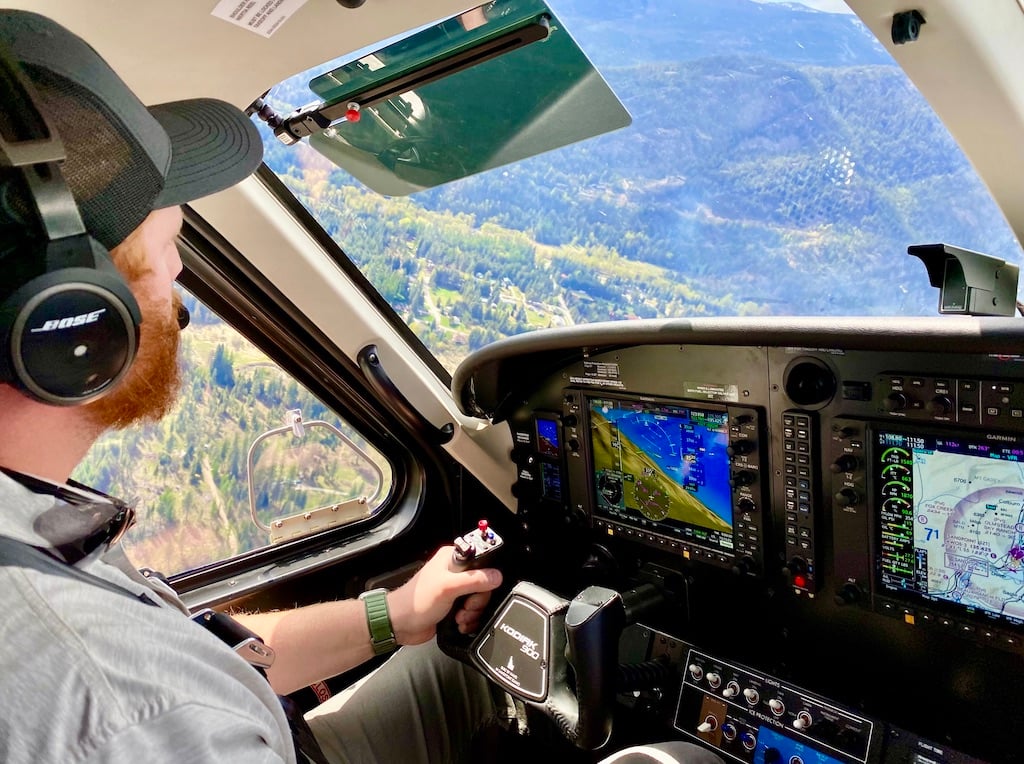
Daher debuted the Kodiak 900 at EAA AirVenture Oshkosh in July 2022. In development since 2016, the 900 has a 3.9-ft.-longer fuselage than the Kodiak 100, which allows for a double club cabin seating configuration. Cabin volume is increased to 309 ft.3 from 248 ft.3 for the 100.
The 900 model comes with a 900-shp PT6A-140A engine, Hartzell five-blade composite propeller, Garmin G1000 NXi avionics suite, standard air conditioning, an integrated belly cargo pod, wheel pant fairings and TKS ice-protection system.
Priced this year at $3.86 million when average-equipped, according to the Bluebook, the Kodiak 900 seats up to eight passengers and two crew, cruises up to 210 KTAS at 12,000 ft. and operates to a maximum range of 1,129 nm. Max takeoff weight is 8,000 lb. Its useful load is 3,630 lb.
Short And Unpaved Runways
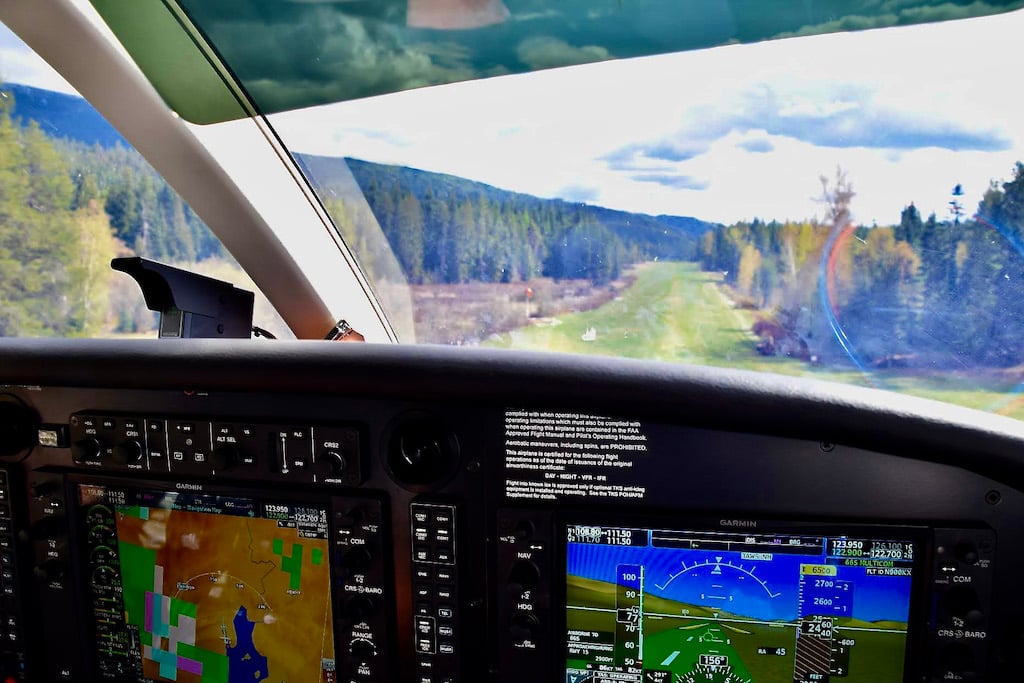
Kodiaks are distinguished by their ability to operate to short and unimproved runways, aided by their high-performance PT6 engines and discontinuous leading-edge wing design, which improves slow-speed handling control and makes the plane resistant to stalls. Kodiaks have robust landing gear—rated to absorb impact with a 9-in. tree stump—and high propeller-tip ground clearance. Use of the Hartzell five-blade carbon fiber propeller in place of the original four-blade aluminum prop on the Kodiak 100 offers a 5% shorter takeoff roll, Hartzell says.
Daher lists takeoff ground roll and landing ground roll distances for the Kodiak 100 of 934 ft. and 765 ft., respectively. Takeoff and landing rolls for the Kodiak 900 are 1,015 ft. and 1,460 ft., respectively.
During BCA’s visit, Daher Kodiak maintenance instructor and flight operations pilot Zachary Wilkinson demonstrated the rough-runway chops of the Kodiak 900, in this case Daher’s original flight-test article, which the manufacturer maintains on an experimental ticket. Flying along the Selkirk Mountains northwest of Sandpoint, Wilkinson descended to land at Cavanaugh Bay Airport (66S), a 3,100-ft.-long grass airstrip and campground on the shore of Priest Lake, wheeled the plane around and powered back over the pristine waters of the bay.
“One thing I’ve tried to emphasize to our dealers is that just because [the Kodiak 900] has wheel pants does not mean it’s not off-airport capable,” says Paul Carelli, Daher Kodiak director of flight operations for North America. “I did the function and reliability testing with the FAA on this airplane with those wheel pants on and we went into some ridiculously rugged terrain [with] zero problems—the prop as well,” he relates. “We were on a plateau in the middle of Arizona that was extremely rugged, and the plane performed flawlessly.”
Integrated Customer Support
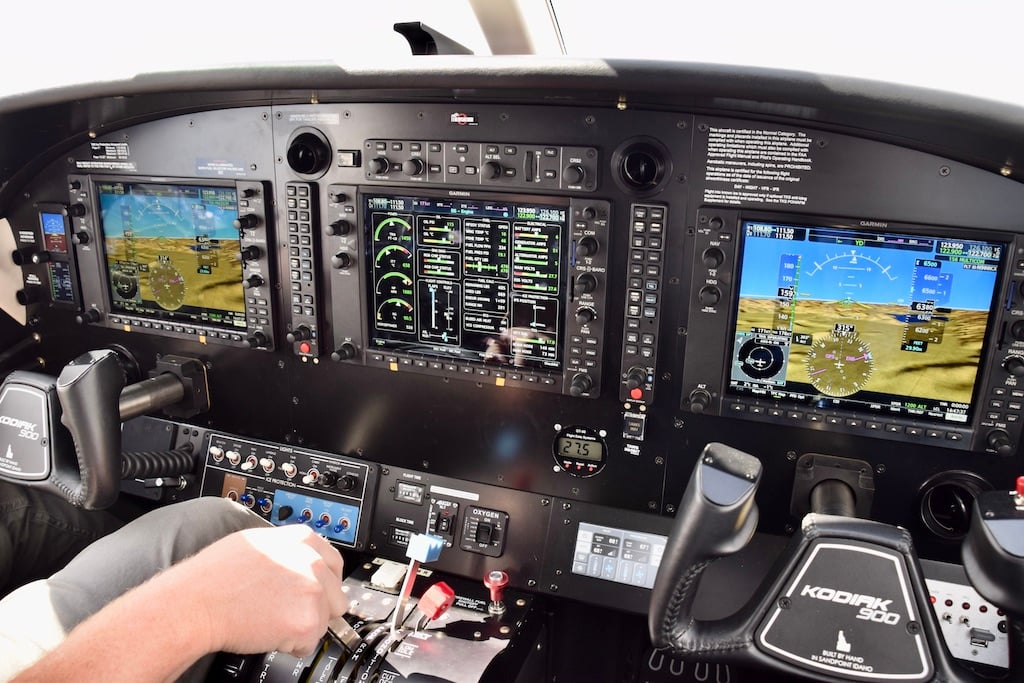
Daher’s latest TBM 960 and the earlier 910—“very fast turboprops,” priced at $5 million and $4.3 million, respectively—share with Kodiaks some of the same major suppliers. Both brands have Pratt & Whitney Canada PT6 engines, Hartzell propellers and Garmin avionics. But they would otherwise seem to make strange bedfellows: the TBM 910/960s are stylish, pressurized, high-end turboprops; the Kodiaks are unpressurized, high-wing utility airplanes with backcountry roots.
Since the Quest acquisition, however, Daher has endeavored to unify the Kodiak and TBM maintenance networks to pool its resources and provide integrated customer support of both aircraft types. As of 2023, Daher said it had delivered 1,187 TBMs and 339 Kodiaks worldwide.
Daher now brings its maintenance providers and some of its suppliers together in a joint Kodiak-TBM Network Meeting, an event that was specific to TBM before Kodiak joined the French industrial group.
Surprisingly, there are examples of operators who fly both TBM and Kodiak, the latter type representing an SUV of sorts that Daher markets as “the ultimate getaway vehicle.” Melding their customer support operations provides owners of either aircraft with a global network of 66 authorized service centers, four owned service centers (in Sandpoint; Pompano Beach, Florida; and Tarbes and Toussus-le-Noble, France).
Not all the authorized service centers currently work on both TBM and Kodiak types, but Daher supports any center that chooses to do so through maintenance training, documentation and onsite evaluations. The manufacturer is developing a harmonized service center agreement, or contract, that incorporates both model types, and it makes an effort to visit several service centers each year, said Richard Townsend, customer care manager for the TBM & Kodiak Care organization.
“More and more, as time goes on, we’re trying to utilize the network for both Kodiaks and TBMs as much as possible,” Townsend said. “Both sides have been doing a lot of things really well for a long time. We’re putting a lot of effort into finding out who does what better than the other and how [we can] integrate the best of each.”
Daher provides customer support training of its own personnel and incorporates training offered by common suppliers like Garmin. It is cross-training specialists to be able to support both aircraft platforms.
“The ultimate goal is to have multiple people at Tarbes and multiple people at Pompano, and multiple people [in Sandpoint] that are well versed in each of the aircraft,” Townsend said. “They will be able to provide that detailed support we’re known for at each location for each model.”
Technical And Training Support
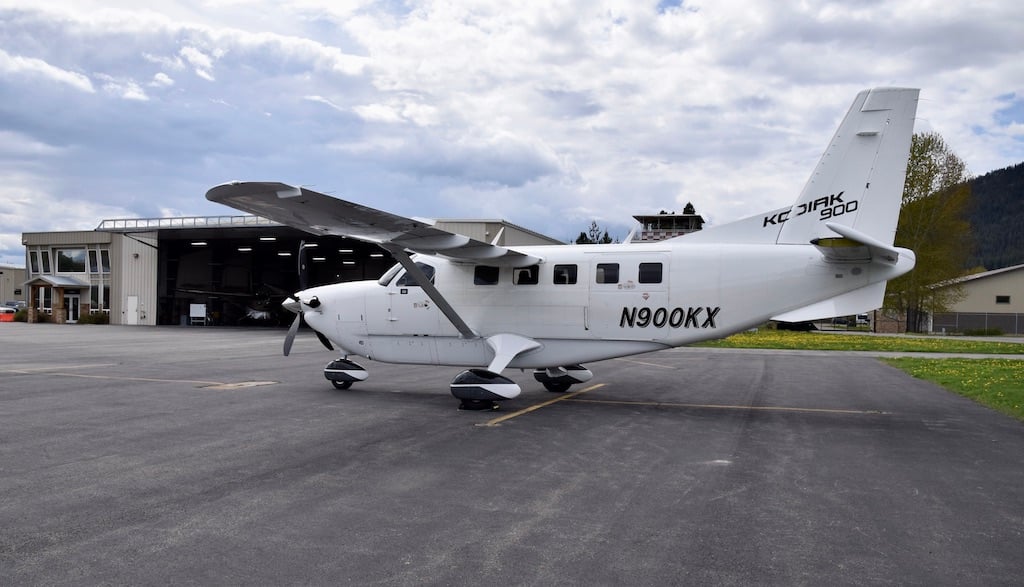
Daher provides 24/7 Aircraft On Ground and technical support of TBM and Kodiak operators. Last year, it designated Simcom Aviation Training as a factory-approved training organization for Kodiak 100/900 pilots, supported by a Frasca flight simulator at Simcom’s Scottsdale, Arizona, location.
Daher was in the process of developing a new, intracompany Customer Relationship Management platform to track data for both aircraft types from point-of-sale through the life of the aircraft. It plans to eventually merge its public-facing MyTBM.aero and Kodiak.aero websites.
The integration of TBM and Kodiak has certainly involved a learning curve, Townsend acknowledged. But it has not been interrupted by any cultural clash between legacy French and American manufacturers.
“The biggest thing was [TBM] had been doing this for so long—they had their processes refined and their way of doing things,” Townsend said. “Coming into it, there was a lot of time spent on trying to understand each other’s processes. But really, from a cultural standpoint, they shared a lot of the same values. It was really a pretty easy merger.”
In an accompanying article, we discuss how the Kodiak 100 has become a popular special mission aircraft for both government and private operators.





